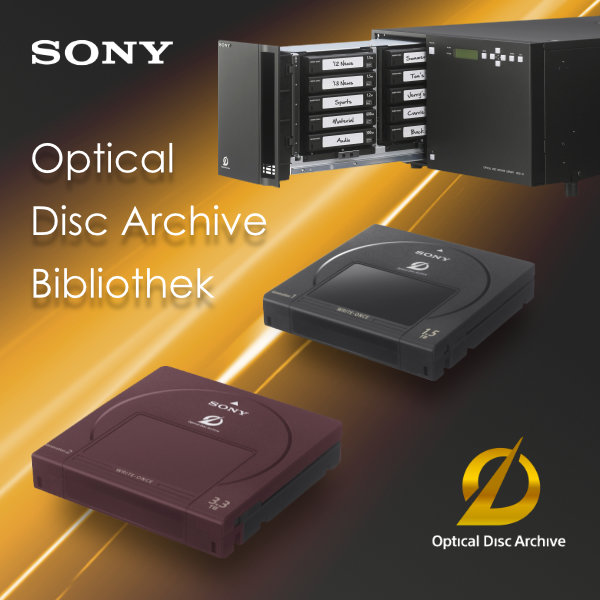Film and audio recordings in particular are important contemporary documents, and anyone who has ever visited a television or radio station archive will understand why a company like Sony is moving from Blu-ray to ODA (Optical Disc Archive) and is continuing to expand.
The amount of data that has to be archived by radio and TV stations is almost unimaginable for a normal user. Especially with HD and UltraHD resolutions, these are moving fast in a large-volume storage area, as hardly any other industry.
The latest Sony product, the double-sided ODA medium with 300 GB capacity, shows that the development of optical data carriers is being driven forward more and more. While the first generation of the Sony ODA cartridge came with 12 single-sided 128 GB media to 1.5 Terabyte storage capacity, Generation 2 now offers 3.3 Terabyte with 11 double-sided media.
The Sony PetaSite Library now allows capacities of up to 1.7 petabyte per system (with one master unit and 6 extension units), which is not only interesting for the broadcast market. Especially for high-resolution image data in science and research or in medicine, optical storage systems with steadily increasing capacity and long durability of the data carriers are becoming more and more interesting.
For more than 30 years INCOM distributes professional optical archiving systems, among others also from the Japanese manufacturer Sony, which was already significantly involved in the development of the CD-R and still produces optical data carriers and is constantly developing them.
